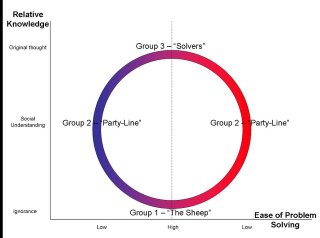Illegal Immigration: A Necessary Part of the American Economy?
Illegal labor has become the backbone of many businesses in America, particularly for agriculture, restaurants, construction, and many service industries, providing low cost labor that reduces consumer prices and increases profit. That may all change with the introduction of Bill HR 4437, which passed in the House last December and is currently being debated by the Senate. Titled the “Border Protection, Antiterrorism, and Illegal Immigration Control Act of 2005”, this bill would enact a mandatory “employment eligibility verification system” to be in place in the next six years. Employers still using illegal alien labor after that time are subject to a fine up to $50,000 for each worker and possibly one year of imprisonment (H.R. 4437, 2006, Title VII: Employment Eligibility Verification).
These extremely harsh penalties and forced conversion to legal workers have many employers worrying about the feasibility of a complete switch of their labor force in the next six years. With many industries so dependent on illegal labor, they wonder if there are enough American workers to replace an estimated 9-12 million illegal aliens. Business owners say they can not find legal workers to do these jobs, many of which are undesirable, hard labor positions. Even if a replacement labor force exists, many companies may not be able to afford the drastic increase in wages necessitated by hiring at minimum wage and providing benefits. The increased costs of labor will have to be passed on to consumers, perhaps causing dramatic price hikes for basic necessities like food. Businesses worry that consumers will be unwilling to pay the increased prices, resulting in serious damage to American businesses. These business owners claim that
However, it is important to remember that at one point Americans were happy doing these jobs because they provided wages that could support a decent living. These jobs only became undesirable when employers lowered their wages because there was a labor market willing to accept them. This transition can be seen in the many industries currently undergoing the switch to illegal immigration. Take for example the construction industry, in particular, David Shafer, the latest in a family of house framers in
But how can increasing the cost of labor be good for American businesses? Won’t the resulting increase in consumer prices cause a large economic collapse? First, remember that increasing wages works on both sides of the argument. It increases consumer prices, but it also raises the spendable wages of the group least able to afford current prices. Indeed, the lower-middle class and poverty classes, the ones who would be most damaged by a price increase, are also those whose improved wages caused the price increase.
Compared to the increased take-home pay for the lower classes, the price increases might not be as harmful as some might think. While statistics on possible price increases due to loss of cheap illegal labor vary widely (from $.19 per head of lettuce to $5.00), a worse-case scenario thought experiment on the subject can give us an indication of the possible effects of using legal labor. Even if an employer is forced to raise wages for agricultural workers by the high amount of $10.00/hr and assuming that worker to only be able to pick 50 heads of lettuce per hour, the increased cost per head of lettuce picked by that worker is only about 20 cents a head. If we add on an increase of pay at packaging plants and grocery stores, it is conceivable that the total price increase might be around $1-2. However, this same full time worker who is purchasing that lettuce would now be making around $400 more every week. Even if the worker’s total weekly grocery costs increase by $100, the increase in take-home pay of workers seems to still be significant enough to allow workers to increase their spending, which could then be passed on to the farm owners, who might stand to actually make money due to an increase in spending.
In general, the upper-middle class will not be as drastically affected by a possible increase in grocery and service prices as some believe. In fact,
Britannica says that American households spend 7.9% of their income on food in the home, much less than
In the short term view, the switch away from illegal labor may cause some financial problems for businesses as Americans adjust to a new price scale, but these problems are not permanent, devastating, or unsolvable. In the six year transition period, a worker shortage is possible, but there is no evidence that American workers will refuse these jobs, once the wages are brought up to a decent standard. Indeed, workers in industries that are only just experiencing the conversion to illegal labor, like house framer David Shafer, would gladly take their old jobs back. Though wage increases may make a large initial impact on businesses that have been using illegal labor longer, the increased spending capability of their workers will eventually be beneficial to their business and the American economy. Prices will increase across the board, but so will Americans ability to afford them. There is time over the next six years for American businesses to prepare for and survive the transition to a legal labor market, ending





